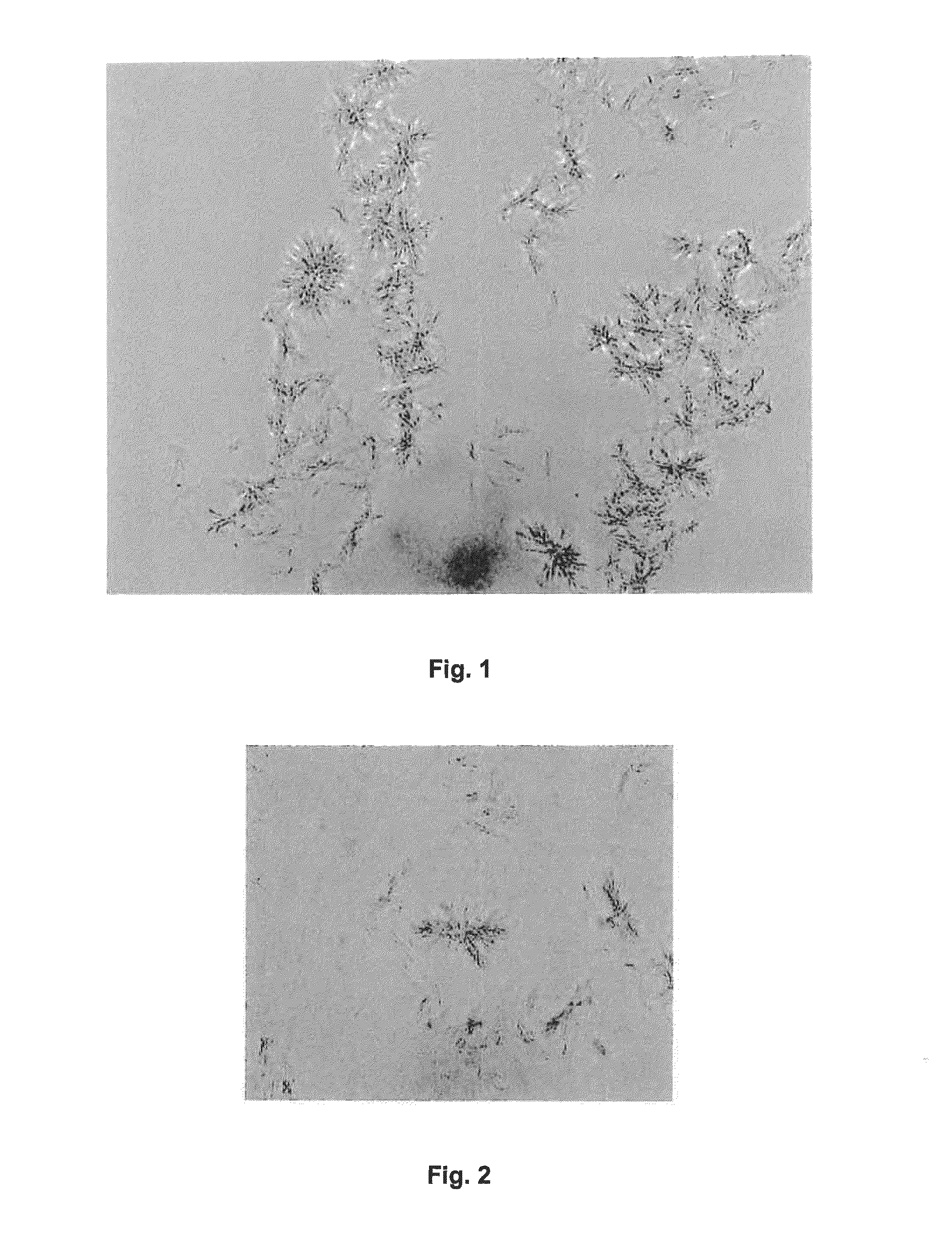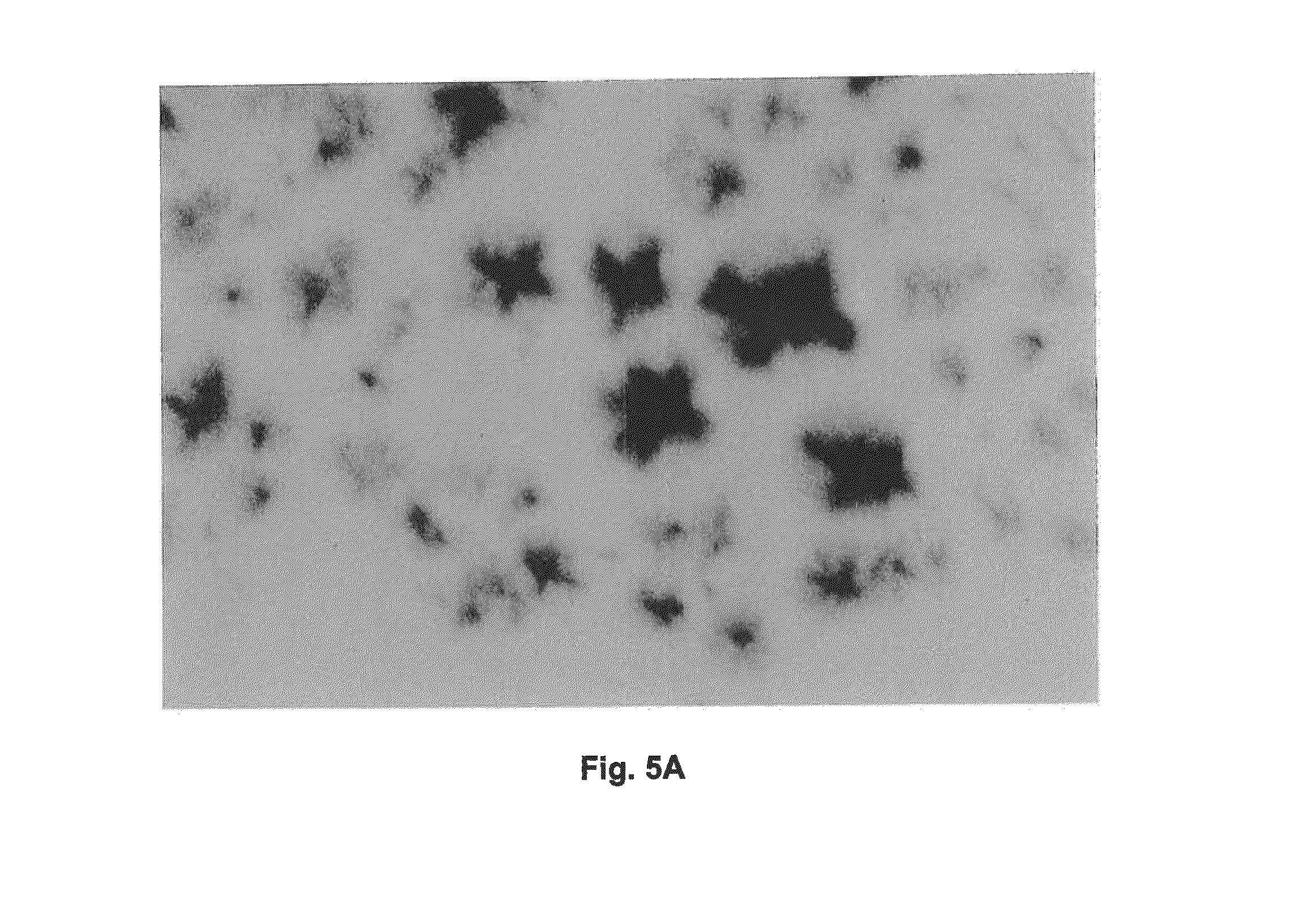Crystalline anti-hTNFalpha antibodies
a technology of crystalline anti-htnfalpha and antibodies, which is applied in the direction of immunological disorders, drug compositions, metabolism disorders, etc., can solve the problems of reducing the safety and stability of syringes, affecting the ability of syringes to be inserted through patient-friendly thin needles, and increasing the cost of dosing
- Summary
- Abstract
- Description
- Claims
- Application Information
AI Technical Summary
Benefits of technology
Problems solved by technology
Method used
Image
Examples
example 1
PEG 4,000 / Sodium Acetate Grid Screen in Hanging Drop Vapor Diffusion Mode
[0199]D2E7 was buffered into a buffer containing around 0.1 M sodium acetate at a pH of around 5.2. The protein concentration was adjusted to 10 mg / mL.
[0200]A greased VDX plate and square OptiClear plastic cover slides were used. 500 μL of a particular reservoir solution was prepared by admixing acetate buffer, 50% w / v PEG 4,000 solution and Milli Q water (fully desalted and optionally pre-destilled) in each well. In this example, the acetate buffer molarity was kept constant at around 0.1 M, and PEG 4,000 was varied from around 6% w / v to around 28% w / v in 2% steps. The pH was around 5.2 throughout. Each condition was assessed in duplicate. Around 1 μL of protein solution was admixed with around 1 μL of a particular reservoir solution on a square OptiClear plastic cover slide, and the well was sealed with the inverted slide, generating a hanging drop experiment. The plates were stored at ambient temperature. Mi...
example 2
PEG 4,000 / Sodium Acetate Grid Screen in Hanging Drop Vapor Diffusion Mode, Different Protein Concentration
[0202]D2E7 was buffered into a buffer containing around 0.1 M sodium acetate at a pH of around 5.2. The protein concentration was adjusted to 50 mg / mL. Except for the protein concentration the process conditions were identical with those of Example 1.
[0203]RESULTS: From the 24 wells assessed, no crystals were observed.
example 3
PEG 400 / Sodium Acetate Grid Screen in Hanging Drop Vapor Diffusion Mode
[0204]D2E7 was buffered into a buffer containing around 0.1 M sodium acetate at a pH of around 5.2. The protein concentration was adjusted to 10 mg / mL.
[0205]A greased VDX plate and square OptiClear plastic cover slides were used. 500 μL of a particular reservoir solution was prepared by admixing acetate buffer, 50% w / v PEG 400 solution and Milli Q water in each well. In this example, the acetate buffer molarity was kept constant at around 0.1 M, and PEG 400 was varied from around 30% w / v to around 40% w / v in 2% steps. The pH was around 5.2 throughout. Each condition was assessed in duplicate. Around 1 μL of protein solution was admixed with around 1 μL of a particular reservoir solution on a square OptiClear plastic cover slide, and the well was sealed with the inverted slide, generating a hanging drop experiment. The plates were stored at ambient temperature. Microscopy of the drops was performed multiple times ...
PUM
| Property | Measurement | Unit |
|---|---|---|
| length | aaaaa | aaaaa |
| concentration | aaaaa | aaaaa |
| concentration | aaaaa | aaaaa |
Abstract
Description
Claims
Application Information
 Login to View More
Login to View More - R&D
- Intellectual Property
- Life Sciences
- Materials
- Tech Scout
- Unparalleled Data Quality
- Higher Quality Content
- 60% Fewer Hallucinations
Browse by: Latest US Patents, China's latest patents, Technical Efficacy Thesaurus, Application Domain, Technology Topic, Popular Technical Reports.
© 2025 PatSnap. All rights reserved.Legal|Privacy policy|Modern Slavery Act Transparency Statement|Sitemap|About US| Contact US: help@patsnap.com



